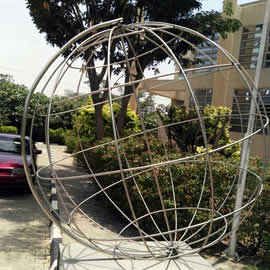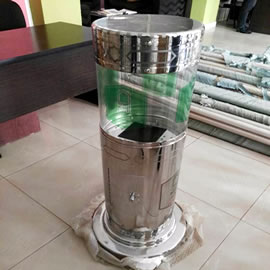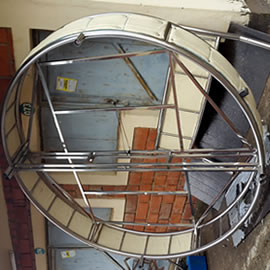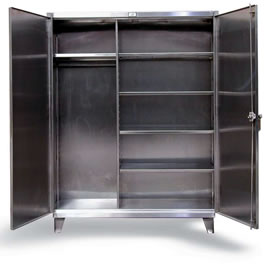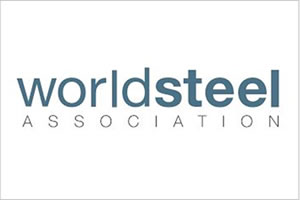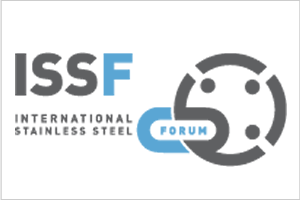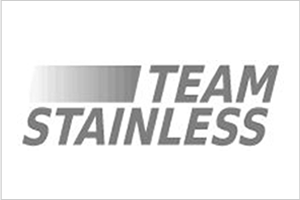The Protection Application
In this section, you can learn about how stainless steel can be used to protect the environment and human health.
Environmental Protection
Stainless steel contributes to a healthy living environment because of its role in clean and portable water supply. However increasing living standards and population densities continue to put pressure on available water supplies, such that investment in new sources and water treatment facilities is expanding rapidly and will continue to do so for some time to come. Whether it is to expand the purification of water from existing sources, or to bring on–stream completely new types of supply such as desalination, we find an increasing need for tubes, valves, filters and other components made from stainless steel. Its corrosion resistance is an obvious benefit for such components but so, too, are its ease of fabrication and its cleanability. A further important consideration is the inert nature of stainless steel from a biological standpoint. Increasingly stringent water purity standards require materials that do not leach into the water significant traces of hazardous constituents. In this section, papers and other publications describe the many ways that stainless steels help to prevent contamination of our lakes and rivers as well as to treat and distribute the water from our taps that so often we take for granted.
The prevention of air pollution has become one of the most challenging environmental issues facing mankind. The effect of increased levels of “greenhouse gases” on climate change is perhaps the most topical example, but pollutants such as sulphur dioxide, a major cause of “acid rain”, and fine particulates with their implications for human health, are others worthy of note. Many of the new technologies used to limit harmful emissions to the atmosphere involve the formation of condensates which, at the same time, help to minimise energy losses. Such condensates, however, are usually highly corrosive to metals and alloys. It is primarily because of their superior resistance to heat and corrosion, that stainless steels and other iron-chromium- nickel alloys are used in such instances. A couple of examples will clearly illustrate this trend: Flue gas desulphurisation units fitted to coal-burning power stations Condensing boilers which lead to more efficient use of the energy from fossil fuels. “Low Car bon” or “Zero Carbon” technologies are expected to gain prominence in the future, and many of these also benefit from the special properties of stainless steels. Nuclear power installations provide an excellent example, in which these materials are used not only in the core of the reactor itself, but in cooling installations used for the safe long-term storage of radio-active waste products. This section of the library features these and many other examples of the ways in which stainless steel can help to protect the air around us.
Human Health Protection
The ease with which stainless steel surgical instruments and appliances can be kept clean and sterile provides an obvious illustration of the way the material helps to safeguard our health. However, there are so many less obvious ways in which the contribution of stainless steel to our well-being is of growing importance. The “hygienic” qualities that are so vital to medical equipment are equally valuable when used in the preparation of healthy foods and beverages (see also “Industrial Applications – Food and Beverage”). In the kitchen and bathroom, sinks and utensils made from stainless steel not only look attractive but are easy to keep clean and free from harmful bacteria. In the field of transport, stainless steel catalytic converters help to reduce the pollutants from exhaust systems that have been a major concern for health in our towns and cities. The generation of electricity provides further examples, such as the removal of poisonous fractions from waste gases being emitted from coal-fired power stations, and the safe storage of radio-active waste from nuclear facilities.




